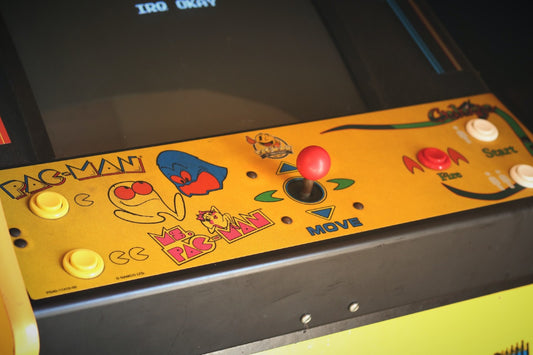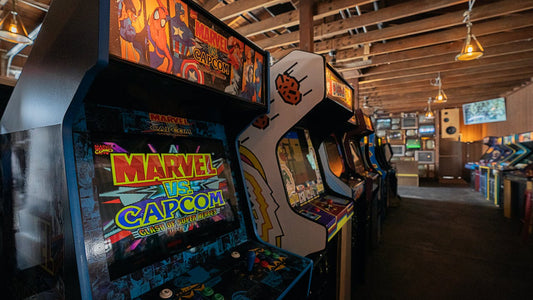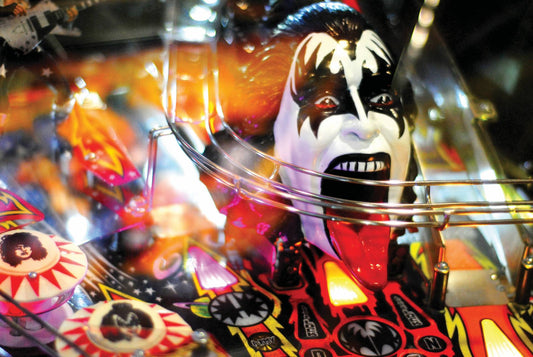Virtual Boy
Nintendo’s Virtual Boy is seen as a commercial failure, as one of the worst games consoles ever created. This was seen though the console being on sale for under a year in both Japan and North America, and was not released outside of this due to the unsuccessful nature of the product.
The Virtual Boy started life as a red, LED light, eyepiece which featured 3D features as well as head-tracking. This system was called the ‘Private Eye’ and was developed by the company Reflection Technology Inc. The company believed that their ‘Private Eye’ system was the forefront of technology so decided to market the project to gaming companies for funding. One of the companies approached was Sega, who had declined the technology over concern of potential motion-sickness.
However, when Sega’s rivals Nintendo were faced with the Private Eye, they were seen to snatch up the opportunity to delve into more modern technology. Nintendo collaborated with Reflection Technology Inc., and started working on the virtual reality headset almost straight away. The project was dubbed ‘VR32’ and was in development for a whopping four years, Nintendo even granting the project a dedicated manufacturing plant in China. The goal for the VR32 was to be as affordable and health-conscious as possible.
Though, this have been proven to not be the case, as whilst development began on this system, Nintendo’s next home console was also being produced – the N64. Overtime, this meant that the VR32 was pushed to the back of the company’s priority list, which is evident in the manufacturing of the system. The system was capable of having fully-functional colour, 3D graphics as well as featuring head-tracking. However, these elements were scrapped to save money and to manufacture an affordable console, as some had estimated the price to be over $500. Finally, Nintendo had decided that they had to dedicate more time to their other consoles, therefore, pushing out the console onto the market.
Although it was manufactured to be affordable, the final product was released onto the North American market for $179.95. Though, due to the unpopularity surrounding the system, prices continued to drop throughout its lifespan. Few titles were launched with the Virtual Boy, some of these being Mario’s Tennis, Red Alarm and Galactic Pinball.
It has been estimated that the unpopularity of the system stemmed from the high price and reported discomfort from players. Reportedly, players acquired headaches, dizziness and nausea as only few of the symptoms of playing the game for 10 minutes plus. Additionally, scientists claimed that long-term effects of excessive play of the console could lead to potentially worsening symptoms and illness. Other complaints for the system featured that it did not promote the immersive gameplay that the console was advertised, due to the lack of more than one colour and also as it did not feature head-tracking. Ultimately, Nintendo had promised consumers a form of virtual reality though the final product was cheaply manufactured, expensive and seen as only a gimmick.
The unsuccessful nature of the product meant that Nintendo’s estimation of 3 million sales of units and 14 million games was only filled with 350,000 units by December 1995.
Nintendo focused primarily on the marketing aspects of the Virtual Boy, with claims of the company selling $25 million on early promotional activities alone. The company attempted to advertise outside of their target audience with the system, focusing largely on larger audiences.
Other marketing activities that Nintendo had decided on was the incorporation of renting out the Virtual Boy. Nintendo teamed up with Blockbuster, with 3000 of the North American chain stores participating. A player could rent out a Virtual Boy for $10, which seemed to work considerably even due to the poor sales, producing over 750,000 rentals. Furthermore, when the customer returned the console they were given a $10 voucher to buy the system in any store.
The Virtual Boy was designed to be placed on flat surface, and the controllers was symmetric for the ease of left-handed players. Multiplayer was also manufactured for the console, however, due to the unpopularity of the console, no game was created that featured the ability to do this.
Nintendo’s Virtual Boy is seen as one of their worst-selling consoles. With its 22 games released (Just a fraction of the retro games you can play on our amazing custom arcade machines), and along with the fact that Nintendo had only shipped 1.26 million units, it is now seen as a valuable collector’s item.



